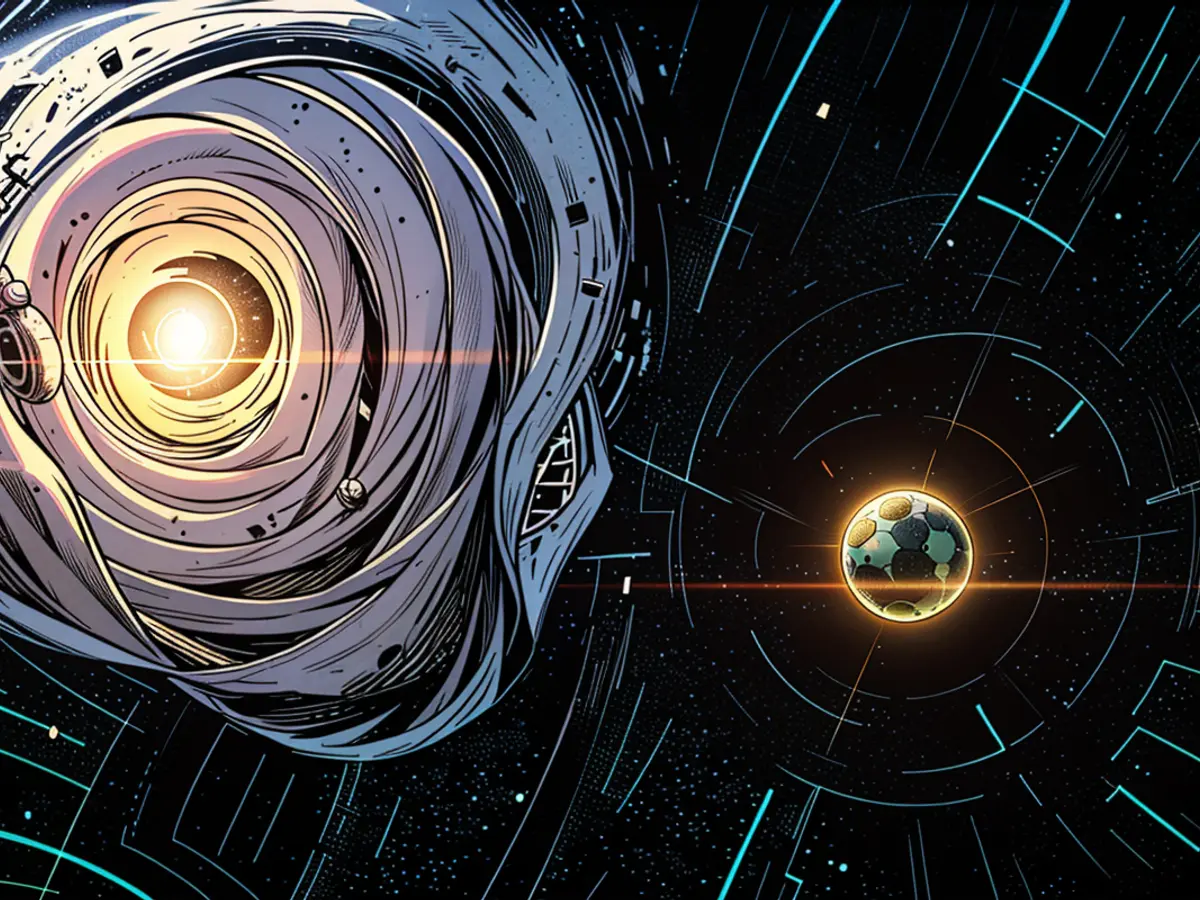An uncommon entity is traversing our cosmic domain.
Initially, researchers were on a quest to uncover the elusive ninth planet within our solar system. Surprisingly, they stumbled upon an oddity: an object zipping through the cosmos at an astounding speed. With a velocity of approximately 1.6 million km/h, this rapid movement could even transcend the Milky Way's gravitational pull, as reported by the Keck Observatory in Hawaii.
This intriguing discovery was made by amateur astronomer enthusiasts collaborating on NASA's project, Backyard Worlds: Planet 9. This venture delves into space imagery to spot potential ninth planets or nearby objects suspected to be stationed at the solar system's edge. These space images were captured by NASA's WISE (Wide-field Infrared Explorer) mission, which observed the cosmos in infrared light between 2009 and 2011.
"I was really shocked"
Some years prior, three participants in the search detected a dim, swift-moving object named CWISE J1249 on the images. One of the discoverers, Martin Kabatnik from Nuremberg, stated, "I was really shocked," according to a NASA announcement. "When I first noticed its rapid pace, I figured it had already been reported."
Subsequent observations using telescopes bolstered the discovery and provided more precise calculations. This high-speed object was detailed in a recent study, which can be accessed as a preprint and will be published in the journal "Astrophysical Journal Letters".
Low mass anomaly
The object's remarkable speed is not its only peculiarity. Its minimal mass is also intriguing. It may be a low-mass star or a brown dwarf, an object falling between a substantial gas planet and a star that never truly emits radiance. This newly discovered high-speed object boasts a mass comparable to or lesser than that of a small star. Previously identified extremely fast objects, known as "hypervelocity stars", typically have larger stellar profiles.
This newfound object exhibits another unique characteristic. Data from the Keck Observatory in Hawaii reveals that it boasts far less iron and other metals compared to other stars and brown dwarfs. This unusual chemistry hints at CWISE J1249 being an ancient object, hailing from one of the Milky Way's earliest generations of stars. Moreover, it is situated at a staggering distance of just 400 light-years from our solar system.
The root of its speed
But what causes this object's relentless pace? Experts propose several possibilities. One theory suggests that CWISE J1249 originated from a binary star system supporting a white dwarf that detonated as a supernova when it sought too much material from its companion. "In this Supernova scenario, the white dwarf is entirely obliterated, releasing its companion and propelling it away at a speed equal to its original orbit's velocity, combined with a tiny boost from the explosive blast," shares Adam Burgasser, a professor of astronomy and astrophysics at the University of California and the primary study author.
An alternative theory posits that CWISE J1249 was hurled into the vast expanse of space due to a haphazard encounter with black holes within a globular cluster. "When a star collides with a black hole, the complicated dynamics of this three-body interaction can hurl the star directly out of the globular cluster," explains Kyle Kremer, an assistant professor in the Department of Astronomy and Astrophysics at the University of San Diego. Researchers are currently planning to scrutinize CWISE J1249's chemical composition more closely to ascertain which theory is more plausible.
The rapid movement of this oddity, CWISE J1249, could potentially surpass the Milky Way's gravitational pull, leading some to speculate that it might be a low-mass star or a brown dwarf, a type of object that falls between a gas planet and a star. This high-speed object was discovered in space imagery during NASA's Backyard Worlds: Planet 9 project, focusing on identifying potential ninth planets or nearby objects at the solar system's edge.
The object's unprecedented speed and minimal mass make it an intriguing addition to our understanding of space, as its unusual chemistry suggests an origin from one of the Milky Way's earliest generations of stars. To further understand its origins, researchers are planning to study its chemical composition more closely, exploring theories such as its ejection from a binary star system due to a supernova or an encounter with black holes within a globular cluster.







